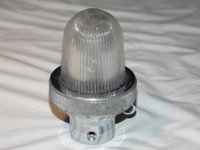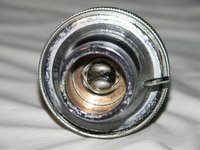Cruising Hints Article 1948



Cruising Hint Article 1948
The Burnham Sloop
L.O.A 21ft
L.W.L 18ft
Draft 3.9feet Designer Norman E. Dallimore Sail Area 265sq ft. Displacement 2.75 tons Headroom 5ft Tonnage 3.2 TM Builders R. J Priors & Sons, Burnham-on-Crouch
This is another distinctive little yacht from the board of Mr. Dallimore, which particularly appeals to me as she has a very nicely raised deck. Mr. Dallimore has prepared an alternative design with a coach roof cabin top, but I have selected the former for reproduction, as apart from the enhanced accommodation below decks, it’s in my opinion more pleasing to the eye. Indeed, I consider it confirms my contention that a raised deck, if well designed, does not in any way mar the appearance of a small yacht, as many people seem to think.
The Burnham Sloop was designed for Mess’s, R . J Priors and Son, Burnham-on Crouch, just before the war, as a standard yacht, and although several keels for the boats have been cast, production stopped at the outbreak of the hostilities. I understand, however, that work will resume as soon as circumstances permit.
There is likely to be a big demand for these little ships in the near future as they are admirably adapted to weekend sailing in the Crouch and the adjacent waters. Having lived in Burnham and sailed the Crouch for many years, Mr. Dallimore knows the type of boat best suited to this district, and I shall be surprised if the yacht does not prove to be very popular. The Burnham sloop has lines and a graceful sheer, and with her short forward overhang, should prove to be a good sea boat. With a good length of straight keel she should be steady on the helm and take to the ground well. Her sail area is a snug Bermudan rig and should be adequate, as it conforms approximately to Albert Strange’s rule of 100 square feet for each ton of displacement, and the height of the mast – 29 feet from deck to truck, is not excessive. She should be easily handled with Wykeham-Martin furling gear on the foresail and would make an admirable little single-hander.
Below decks, the boat is exceptionally roomy, sleeping accommodation being provided for three people – two on the bunks in the cabin and one on the pipe-cot in the foc’c’sle. The bunks are 1 foot 9 inches wide and the cabin sole 1 foot 11 inches. The raised deck affords about 6 inches more headroom in the fo’c’sle where the sanitary bucket is installed, and she is well found in cupboards and lockers. Exception might be taken to the position of the chain locker, which is perhaps nearer the bow than desirable. Even a C.Q.R anchor and 20 fathoms of ¼ inch chain weigh 1cwt. a load that would be better carried nearer the mast, but a little ship like this must of necessity be something of a compromise and I think it will be agreed that Mr. Dallimore has laid out the available space to the best advantage. Thanks to the raised deck, there is ample headroom to allow one to sit back on the bunks and rest on the side of the boat, a feature that makes for comfort.
There is a small galley, large enough to take a gimballed Primus, under the side deck, near the companion on the starboard side, with a locker in front of it. Opposite, on the Port side, are placed a cupboard and sideboard, with another sideboard at the fore end of the Port bunk. Space has been left beneath this sideboard for the sleeper’s feet, thus ensuring a bed of 6feet in length. Forward of the starboard bunk there is a large hanging clothes locker, and another locker provided forward of the port bunk. There are also lockers under the bunks and in the cockpit.
At the time I write the price of the yacht has not been fixed, but it is expected to be from £400 - £450, which seams a reasonable figure in view of the advance that has taken place in the cost of construction since the war. As the small yacht, will accommodate three people, the cost to each, if they owned the boat in partnership, would be quite moderate. Altogether the Burnham Sloop strikes me as a jolly little ship in which one could any amount of fun and cruise from port to port in relatively fine weather.
The specifications drawn up before the war included pitch pine planking, with American elm timbers and English elm keel; the stem stern post and deadwood of oak, and the deck of fir covered in canvas and painted. The covering boards, hatches and skylight and cockpit were to be of mahogany and internal fittings of mahogany. This specification will be followed as closely as possible, but will of course depend on what materials are available.
There is room for a 4hp Stuart Turner Engine, but it is possible that an outboard engine will be a more popular form of auxiliary power.












